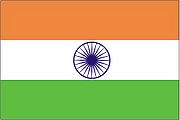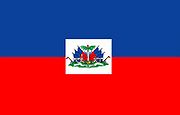From The Peopling of New York City
The Standard Procedure for Applying for an Immigrant Visa
A person will go through four main steps before being granted an immigrant visa. Firstly, a U.S. citizen (petitioner) must petition for an immigration visa on behalf of the prospective America citizen (beneficiary). After the petition, is approved, the next step is preparing for the Immigrant Visa Interview by getting together all necessary documents and processing fees. The third step is the actual meeting in which the beneficiary’s eligibility for the visa is evaluated. At the closing of the interview, the visa will either be granted or denied. If granted, an immigration visa form is filled out; if denied the applicants are informed why they did not get the visa and how they can work to fix it in the future. After approval, the final step entails the retrieval of all the documents used in the application process and the retrieval of the actual visa. Once the visa is obtained, a medical examination is necessary. Certified physicians give a general check up and fulfill any vaccination requirements.
Diversity Immigrant Visa Program
This is a U.S. Congressionally run lottery program in which citizens of foreign countries are granted Permanent Resident Cards. In each country, about 50,000 Diversity Visas are awarded annually in a random selection process. This program is in effect in only countries that have not sent more than 50,000 immigrants to the United States in the previous five years.
India
When a resident of India wants to immigrate to America, becoming a permanent resident, he or she must first apply for an immigration visa. The individual can obtain the immigrant visa at the nearest U.S. Embassy or U.S. consulate—New Delhi, Hyderabad, Kolkata, Chennai, or Mumbai.
The Four Types of Visas
- Family Based: Spouse of a U.S. citizen, child of a U.S. citizen (only if the child has no claim to U.S. citizenship), parent of a U.S. citizen (citizen must be 21 or over), step-parent or step-child of a U.S. citizen (the step parent/step child relationship must occur before the child’s 18th birthday), spouse of a deceased U.S. citizen (within two years of the death), orphan adopted abroad by a U.S. citizen, orphan adopted in the U.S. by a U.S. citizen, unmarried son of daughter of a U.S. citizen, spouse and/or child of a lawful permanent resident, unmarried son or daughter of a Lawful Permanent Resident (son or daughter must be 21 or over), married son or daughter of a U.S. citizen, brother or sister of a U.S. citizen (citizen must be 21 or over).
- Employment Based: Priority workers, professionals with advanced degrees or persons with exceptional ability in sciences, arts, or business, other professionals, skilled or other workers, special immigrants (religious ministers), and investors.
- K Visas (Other): returning resident alien, fiancée of a U.S. citizen and their children, spouse of a U.S. citizen and their children.
- Diversity Immigrant Visa Program: 50,000 diversity visas (DV) each year are drawn from a random selection among all entries to persons who meet strict eligibility requirements.
Egypt
An immigration visa is necessary for a person to leave Egypt and become a permanent U.S. citizen. A person will obtain this visa at the U.S. embassy in Cairo.
There are four main circumstances for which a visa is issued:
- A spouse or immediate relative of an American citizen or legal permanent resident
- The fiancé of an American citizen
- A prospective employee of an employer in the United States
- Selected through the Diversity Visa (DV) lottery program
The DV lottery program is the most popular method of entry to the U.S. from Egypt. With this system, 50,000 visas are made available. However, the chances of being a “winner” are not great. In Africa in 2008 there were 2,624,000 applicants for the visa—2.01% were granted visas.
Haiti
In order for a native Haitian to become an American citizen, he or she must apply for an immigration visa. A sponsor is necessary to apply for the visa and that person must be an American citizen
The Major Immigrant Categories:
- Immediate Relatives
- Special Immigrants
- Family-sponsored
- Employer-sponsored
There is no limit to the number of immediate family members that can leave Haiti and immigrate to another country. Haiti’s immigration visa policy is unique in the fact that there is no Diversity Immigration Visa Program. It was discontinued in 1998 because of the high volume of legal Haitian immigrants to the U.S.
Return to:
History of Ellis Island and JFK Airport



